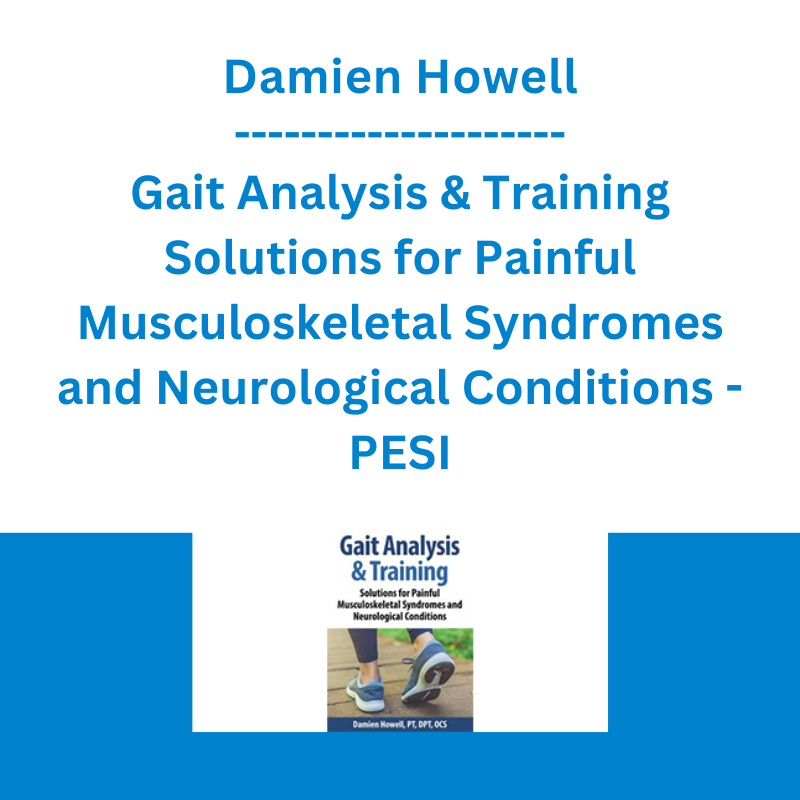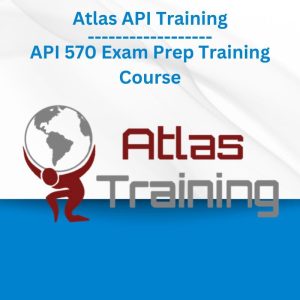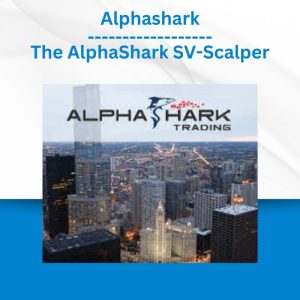*** Proof of Product ***
Exploring the Essential Features of “Damien Howell – Gait Analysis & Training Solutions for Painful Musculoskeletal Syndromes and Neurological Conditions – PESI”
Gait Analysis & Training: Solutions for Painful Musculoskeletal Syndromes and Neurological Conditions
Speaker: Damien Howell, PT, DPT, OCS
Duration: 5 Hours 34 Minutes
Format: Audio and Video
Description
A deviance to gait can have significant impact on a patient’s independence. They’re no longer able to do the things they love and worse – are at higher risk for falls that can lead to significant hospitalization.
Analyzing human gait can be a complex process, but it doesn’t have to be intimidating.
We will explore why you see what you see during gait – and how you can improve function for long-term success. You’ll have thought provoking discussions and labs during this seminar that will teach you the ins and outs of real-time gait analysis and gait deviation. And best of all – you won’t need expensive equipment to get life changing results!
Drawing on decades of experience, Dr. Howell will provide you the skills and techniques you need to:
- Quickly identify and correct gait dysfunction
- Reduce fall risk
- Enable patients to run/walk farther and faster, injury free
- Decrease use of adaptive equipment
You will learn interventions that are both fun and rewarding that will ultimately improve the lives of your patients.
Walk away with advanced gait techniques that can be implemented immediately within your practice.
Speaker
Damien Howell, PT, DPT, OCS
Damien Howell PT, DPT, OCS is experienced in academic, clinical, and continuing education teaching. His graduate studies were at University of Pennsylvania; Virginia Commonwealth University; and Washington University St. Louis with Academic appointments at Indiana University and Virginia Commonwealth University. Dr. Howell is an active clinician who is eager to share what he has learned from his extensive clinical experience. He has presented on gait analysis and gait training to nearly 1000 health professionals across the US. He also has a history of professional leadership roles with the American Physical Therapy Association, Virginia Physical Therapy Board, and Virginia Board of Health Professions. Damien has received several prestigious awards including: Virginia Physical Therapy Association Jack Echternach Research Award; APTA State Legislative Leadership Award; Virginia Physical Therapy Association Beb Cash Award for Clinical Excellence. Dr. Howell continues to provide evidence-based, client centered healthcare in an innovative engaging way to clients, while mentoring, teaching, and leading peers to transform the way physical therapy is practiced.
Speaker Disclosures:
Financial: Damien Howell maintains a private practice. He receives a speaking honorarium from PESI, Inc. He has no relevant financial relationships with ineligible organizations.
Non-financial: Damien Howell is a member of the American Physical Therapy Association House of Delegates; and president of Virginia Board of Health Professions, Virginia Physical Therapy Board.
Objectives
- Demonstrate benefits and barriers to the use of two-dimensional video slow motion analysis.
- Demonstrate techniques which can improve the validity and reliability of gait analysis and slow-motion video analysis
- Categorize 15 common qualitative gait deviations which may be correlated with painful musculoskeletal syndromes.
- Given the location of pain and/or tissue diagnosis, evaluate potential gait deviations for each region and/or tissue diagnosis you might expect the client to demonstrate.
- Apply a symptom modification approach by stating a working hypothesis for gait deviations using good verbal cues, wearable feedback devices, adaptive equipment, shoes/shoe inserts, and/or controlling the environment
- Determine appropriate verbal cues designed to alter the subject’s gait deviation based upon the specific deviation.
- Differentiate potential side effects, unintended consequences of interventions for identified gait deviations
Outline
Exploratory discussions and labs throughout!
Quickly Identify the Issue: Real-Time Gait Analysis
- Best practices for capturing 2D video
- Software apps, smart phone app and editing
- Privacy, documentation, EMR
- Individualized evidence-based practice- working hypothesis
Spot the dysfunction!
Hands-On Guide to Gait Deviation vs Gait Compensation
- Kinematic and kinetic gait parameters
- Associated pain syndromes
- Symptom modification approach
- Therapeutic exercise
- Adaptive Equipment
Strategies for Regional Pain Syndromes
- Geriatric gait fall risk
- Piriformis gluteal tendinopathy syndrome
- Post-op: joint replacements
- Knee osteoarthritis
- Hip osteoarthritis
- IT band syndrome, patella femoral arthralgia
- Stress fractures
- Achilles tendinopathy
- Plantar heel pain
- Hallux limitus
- Metatarsalgia
Tools You Need for Pain Syndromes During Gait
- Verbal cues for gait training
- Implicit vs explicit motor learning
- Wearables
- Orthotics, shoe therapy + adaptive equipment
- Side effects of interventions
- Principles of analysis applied to neurological conditions
Target Audience
- Physical Therapists
- Physical Therapist Assistants
- Chriopractors
- Personal Trainers
- Excercise Physiologists
- Athletic Trainers
- Strength and Conditioning Coaches
- Sports Medicine
- Orthopedic Nurses
- Physicians
Please see the full list of alternative group-buy courses available here: https://lunacourse.com/shop/









